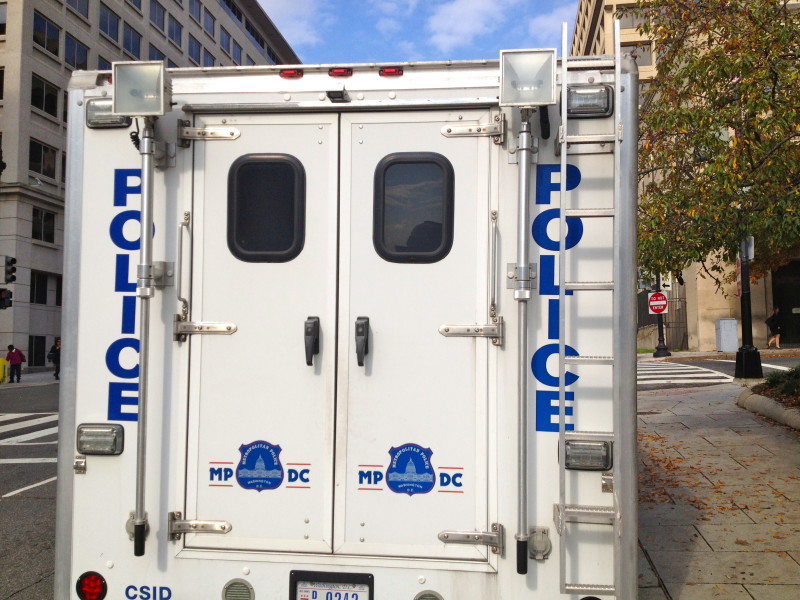Highlights
Where crime is concentrated? Income and location mean much to parents rating neighborhoods as to potential dangers to their children.
It’s a unique and interesting perspective.
Author
Article
Those of us who write about crime are asked about the characteristics of high-crime communities. Pew asked parents to rate the quality of their neighborhoods and the potential dangers to their children.
Most Americans, regardless of demographics rate their neighborhoods as excellent, very good, or good. But there is a world of difference between these neighborhoods and those rated only fair or poor.
When discussing crime or policing, the quality of neighborhoods (as rated by residents) counts. Criminology 101 states that income and the condition of neighborhoods (i.e., litter, graffiti, distressed properties) are correlated with crime and disorder.
When downtown Washington, D.C. was being redeveloped decades ago, finished areas were clean and orderly. One untouched and distressed square block had more than its fair share of dubious people and criminal incidents. Offenders claimed it as their own.
Location means much to parents rating neighborhoods as to potential dangers to their children.
Data From Pew (reordered paragraphs)
A majority of U.S. parents (58%) rate their neighborhood as an excellent or very good place to raise children, and an additional 28% give their community a good rating, according to a recent Pew Research Center survey.
However, more than one-in-ten parents (14%) say their neighborhood is only a fair or poor place to raise kids, and these shares of parents have higher levels of worry for their children’s well-being.
For example, 46% of parents who give their neighborhood only a fair or poor rating say they are very or extremely worried about their children getting shot at some point, compared with a far smaller share (18%) of parents who say they live in a good, very good or excellent area.
Similarly, among K-12 parents who aren’t home-schooling their children, 53% who give their neighborhood only a fair or poor rating are extremely or very worried about a shooting ever happening at their child’s school. This compares with 28% of parents who rate their neighborhood more positively.
The survey was fielded at a time when gun violence had become the leading cause of death for U.S. children. More broadly, recent research has shown that where children grow up can make a difference in key outcomes in their lives.
Parents who rate their community more negatively are also more likely to be worried about other physical dangers facing their kids. Some 44% of these parents are extremely or very worried about their children getting beaten up, attacked, kidnapped or abducted – far higher than the share of parents who say they live in a good, very good or excellent place to raise their children.
About half of parents (51%) who say they live in an only fair or poor area say they are very or extremely worried about their children struggling with anxiety or depression or being bullied.
Among parents who rate their neighborhood more positively, the shares are smaller for these two items – 38% say they are extremely or very worried about their children struggling with anxiety or depression, and a third say the same about being bullied.
Research has shown that mental health disorders are more common among children growing up in “non-supportive neighborhoods” – that is, those where residents do not help each other or watch out for each other’s children.
Among parents with children in K-12 schools, those who rate their neighborhood as only fair or poor are also less satisfied with the quality of the education their children are receiving. Only 38% are extremely or very satisfied, compared with 60% of parents who say their neighborhood is a good, very good or excellent place to raise children.

Conclusions
Per Pew, parents’ assessments of their neighborhoods vary greatly by race and ethnicity, income level, and community type.
Discussions of crime and areas that are economically challenged are complex. There are lower-income urban communities that are safe, low-crime areas. Income and crime are not absolute correlations.
I grew up in Baltimore in a solidly working-class community yet crime was low. Parents did not worry about their children. As a child, I traveled throughout the city on my own without concern.
Appalachia and other communities have their fair share of economic distress along with substance abuse issues yet stranger-to-stranger violent crimes are very low.
Yes, crime is concentrated in distressed communities. But to suggest that it’s a given that “all” low-income or urban communities fall into the category of dangerous or risky places is an overgeneralization.
Generalizations also apply to race or ethnic heritage when the most important variable is place. Per Pew, 47 percent of Black parents living in urban areas rate their neighborhood as only fair or poor, compared with 32 percent of Hispanic parents and 20 percent of White parents.
Overall, 72 percent of African Americans rated their communities as either excellent or good. 78 percent of Hispanics rated their communities as either excellent or good.
Privacy Policy
We do not collect your personal information. See our privacy policy at “About This Site.”
See More
See more articles on crime and justice at Crime in America.
Most Dangerous Cities/States/Countries at Most Dangerous Cities.
US Crime Rates at Nationwide Crime Rates.
National Offender Recidivism Rates at Offender Recidivism.
The Crime in America.Net RSS feed (https://crimeinamerica.net/?feed=rss2) provides subscribers with a means to stay informed about the latest news, publications, and other announcements from the site.

